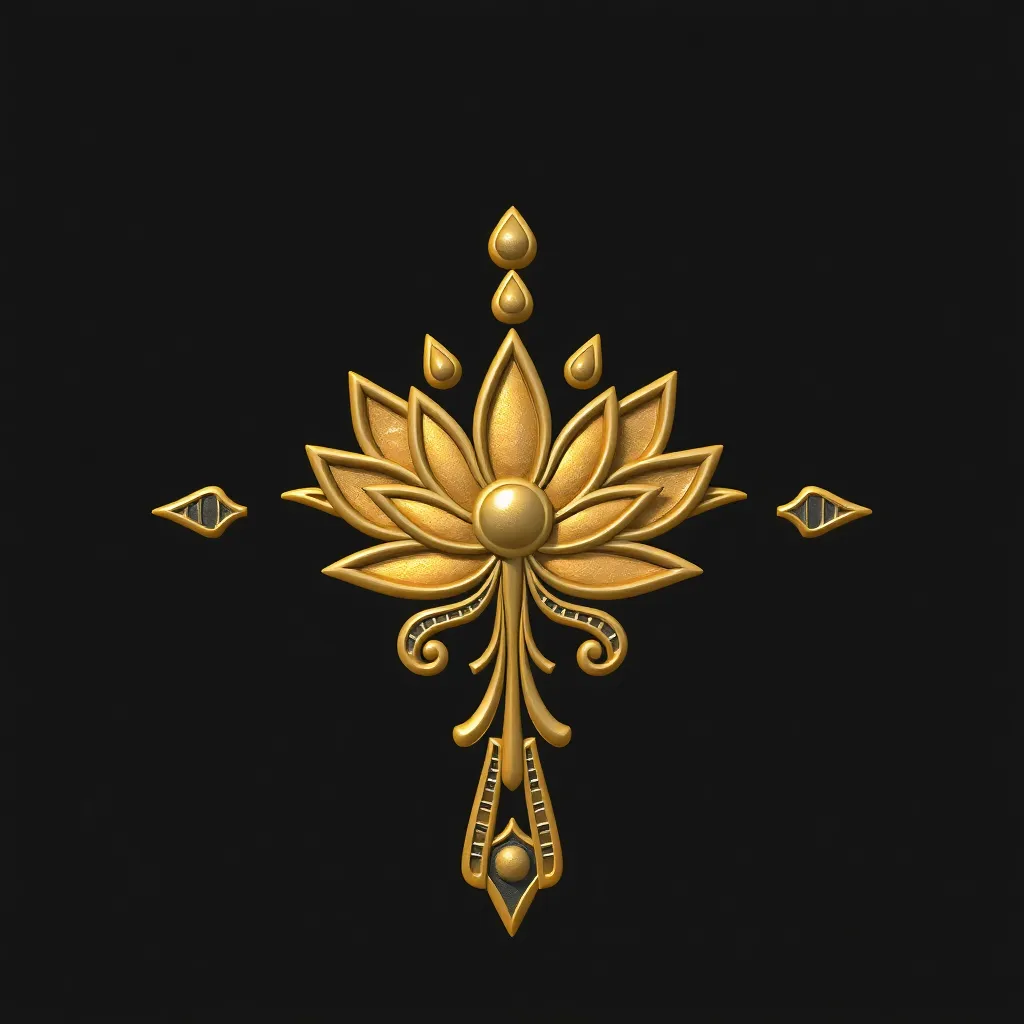The Symbolism of the Lotus in Egyptian Amulet Design
I. Introduction
In ancient Egyptian culture, amulets held profound significance as protective symbols and talismans believed to carry magical properties. These small objects were worn or placed in tombs to safeguard the individual in life and the afterlife. Among the diverse array of symbols used in amulet design, the lotus flower emerges as one of the most prominent and revered motifs.
The lotus flower, known for its beauty and unique characteristics, plays a crucial role in Egyptian symbolism, representing themes of rebirth, purity, and creation. This article aims to explore the meaning and representation of the lotus flower in ancient Egyptian amulet design, delving into its historical context, aesthetic representations, associations with deities, and its psychological and spiritual significance.
II. Historical Context of the Lotus Flower in Ancient Egypt
The lotus flower’s origins in Egyptian mythology can be traced back to its depiction in early art and artifacts. It is often associated with the Nile River, where it thrives, and its presence in the ecosystem contributed to its cultural relevance. In ancient Egyptian art, the lotus symbolized not only beauty but also the cycle of life and death.
In relation to creation myths, the lotus is often depicted as emerging from the primordial waters of chaos, symbolizing the beginning of life. According to some myths, the sun god Ra emerged from a lotus flower, further tying the plant to themes of creation and divinity. The lotus is also known as a symbol of the Nile, intertwining its ecological importance with its mythological significance.
III. The Lotus as a Symbol of Rebirth and Renewal
The life cycle of the lotus flower, which blooms during the day and closes at night, lends itself to symbolic associations with rebirth and renewal. This daily cycle mirrors the sun’s journey across the sky, reinforcing the connection between the lotus and solar deities.
In funerary practices, the lotus was prominently featured in tomb decorations and burial items, symbolizing the deceased’s rebirth into the afterlife. The flower’s association with resurrection reflects the belief in life after death, making it a popular motif in amulets designed to provide protection and assurance in the afterlife.
IV. The Aesthetic Representation of the Lotus in Amulet Design
Lotus motifs in amulet design often showcase a variety of styles, from intricate carvings to simple representations. Common designs include:
- Stylized flower shapes
- Lotus blossoms with open petals
- Bud forms representing potential and growth
The materials used in creating lotus-themed amulets varied, including precious stones, metals, and ceramics. Craftsmen employed various techniques, such as engraving and inlay, to bring these designs to life. Over time, the representation of the lotus evolved, reflecting changes in artistic styles and cultural influences throughout different periods of ancient Egypt.
V. The Lotus and Deity Associations
The lotus flower’s connection to key Egyptian deities is a significant aspect of its symbolism. Notable associations include:
- Nefertum: The god of perfume and healing, often depicted as emerging from a lotus.
- Osiris: The god of the afterlife, where the lotus symbolizes resurrection and eternal life.
The lotus played a vital role in religious rituals and offerings, often used in ceremonies dedicated to these deities. It symbolized divine protection and favor, serving as a reminder of the gods’ presence and their ability to grant life and renewal.
VI. The Psychological and Spiritual Significance of the Lotus Amulet
Amulets featuring the lotus flower were considered potent talismans for protection and healing. They were believed to provide the wearer with strength, courage, and a sense of security. The psychological implications of the lotus symbol on the wearer were profound, often instilling feelings of hope and renewal.
In modern interpretations, the lotus continues to hold relevance in various spiritual practices. Its symbolism transcends time, representing purity, enlightenment, and the ability to rise above challenges, making it a powerful emblem in contemporary culture.
VII. Case Studies of Notable Lotus Amulets
Archaeological discoveries have unveiled numerous lotus amulets, each providing insight into ancient Egyptian beliefs and practices. For instance:
- The Lotus Amulet of Tutankhamun: Found in the tomb of the young pharaoh, this amulet exemplifies the intricate craftsmanship and the significance of the lotus in royal symbolism.
- Funerary Amulets: Many funerary amulets featuring the lotus have been discovered in burial sites, often inscribed with prayers and symbols of protection.
These artifacts reveal not only the artistic styles of the time but also the deep spiritual beliefs surrounding the lotus and its role in ensuring safe passage to the afterlife.
VIII. Conclusion
In summary, the lotus flower’s symbolism in ancient Egyptian amulet design is rich and multifaceted, encompassing themes of rebirth, divine connection, and spiritual protection. The enduring legacy of the lotus continues to inspire modern interpretations and spiritual practices, highlighting its significance across cultures and eras.
Understanding the ancient symbols, such as the lotus, within their historical context enriches our appreciation for the beliefs and values of ancient civilizations. The lotus remains a powerful symbol of growth, resilience, and the eternal cycle of life, resonating with us even today.




